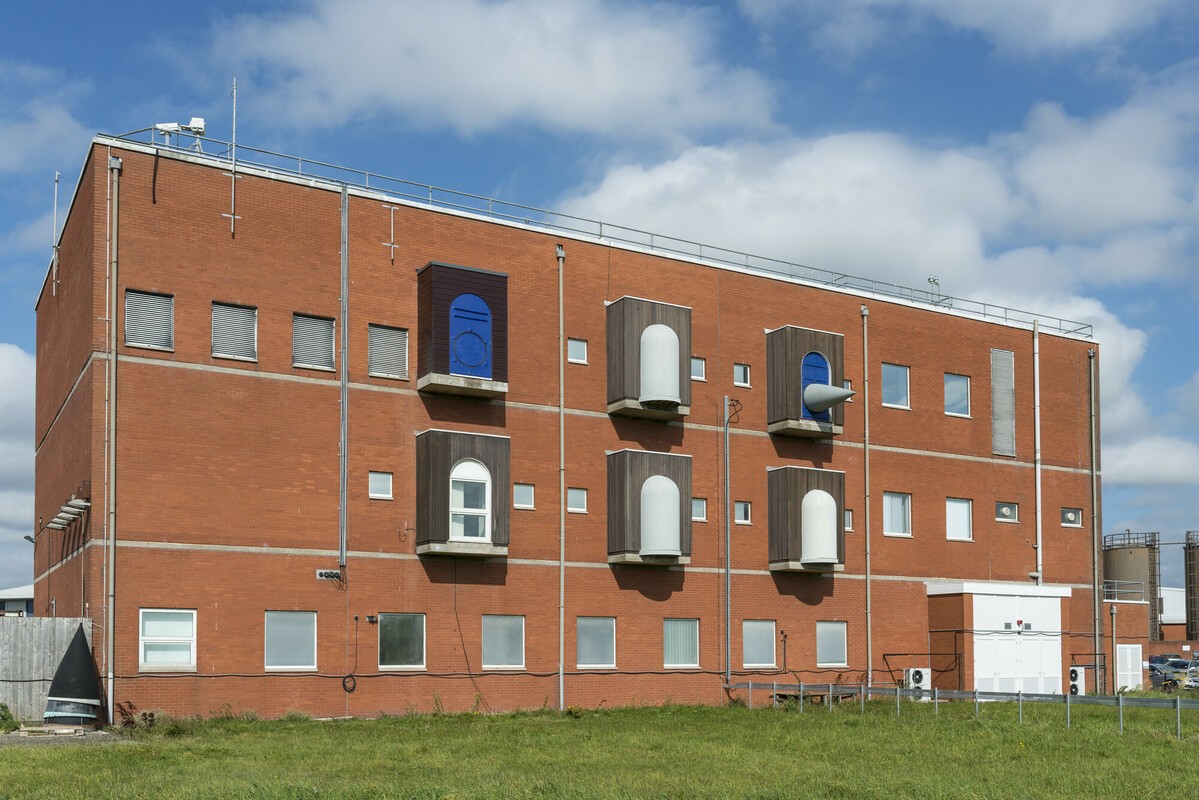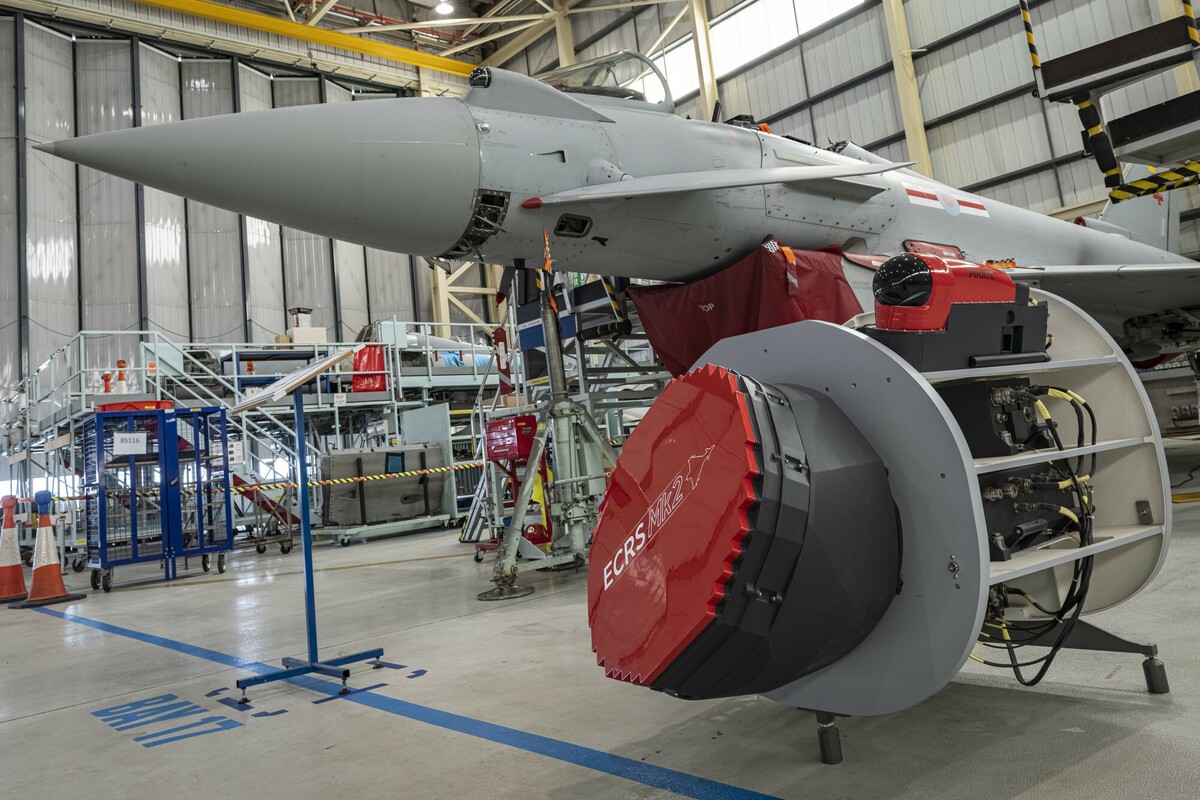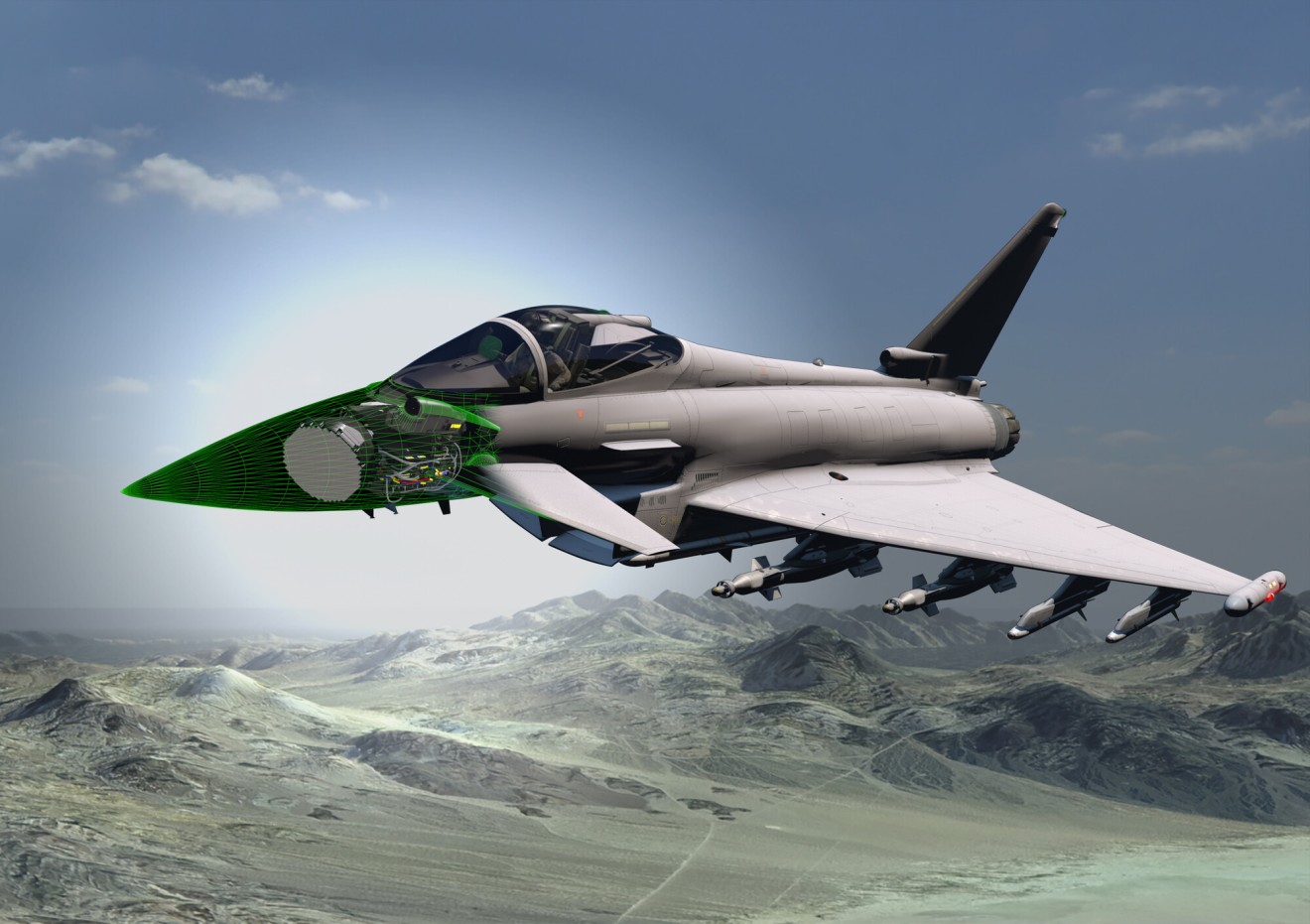The award will fund the further development of technology and integration work on the European Common Radar System (ECRS) Mk2 radar by BAE Systems and Leonardo UK.
Lyndon Hoyle, Head of Typhoon Delivery Team, Ministry of Defence DE&S, said the funding will to lead to initial flight testing in 2024 and the overall objective of project to turn the ECRS Mk2 prototype into something that’s operationally capable over the next five years.
The radar will strengthen the aircraft’s control of the airspace and provide cutting-edge electronic warfare capabilities.
The contract is part of the UK Government announcement, made in July 2022, to invest £2.35billion in the continued technology advancements in Typhoon capabilities, as recognition of its long-term role supporting national security and defence priorities.
BAE Systems leads the overall design, development, manufacture and upgrade of the Typhoon aircraft for the UK and Leonardo is the lead for the aircraft’s main sensing and survivability systems including its radar and defensive aids sub-system (DASS).
Lyndon Hoyle said: “This is part of a major £2.35billion investment from the UK into Typhoon which also includes P4E, a package of upgrades designed to ensure nations can fully exploit new sensors. The third element of the investment will cover the series production of 40 ECRS Mk2 radars for the UK’s fleet of Tranche 3-standard Typhoon aircraft.
We think this is going to be a really potent weapons system. Export customers can take this announcement as a sign of the UK’s confidence and in the ECRS Mk2 and of the UK’s commitment to the future of the Typhoon programme.
He added that the work will help the UK ensure it sustains the skills needed for this complex work — skills that will be needed for future combat air programmes like GCAP.
The ECRS Mk2 radar programme sustains more than 600 highly-skilled jobs across the country, including more than 300 at Leonardo's site in Edinburgh, more than 100 electronic warfare specialists at the company’s site in Luton, and 120 advanced engineers at BAE Systems' site in Lancashire.
Testing In Unique Facility
BAE Systems received the prototype ECRS Mk2 radar from Leonardo in April it has already clocked up hundreds of hours of ‘flying’ — without ever once leaving the ground.
Some might have assumed that the ECRS Mk2 would go straight into a development aircraft and then into the skies. However, the fact is one of the world’s most sophisticated radars is being tested in a unique building on the edge of the runway at BAE Systems’ Warton base, known as the Integrated Test Facility (ITF). It’s being initially put through its paces there because it will help save time, money and manpower as well as the environmental damage from countless flights.

Wing Commander David Boulton, ECRS Mk2 Capability Delivery Director, Royal Air Force (Air Capability), said. “When planning started on ECRS Mk2 we put together a very demanding set of requirements to support the future RAF force mix in the future threat environment and everyone involved has stepped up to the mark. We have worked closely with Leonardo UK and BAE Systems and it is great to see the progress that’s been made to date and the testing that has already been done.”
A test Typhoon aircraft BS116 is already being prepared by the BAE Systems team at Warton so that it is ready to receive the prototype radar ready for flight trials once it has been through a series of tests in the ITF.
New Radar, Game-changing Capability
James Glazebrook, Deputy Director – Europe, BAE Systems, told a media briefing at BAE Systems ITF that the ECRS Mk2 will take Typhoon’s capability to the next level. He said: “It will bring new Electronic Attack and Electronic Warfare capability which will allow the aircraft to simultaneously detect, identify and track multiple targets in the air and on the ground.”
ECRS Mk2 is a wide-band array, which means not only can it detect its own active transmit-receive functions to detect targets, but it can also passively detect emissions through a far broader range of the spectrum.

It is able to track both airborne targets and surface-based emitters without having to discharge a signal itself. It’s what’s called ‘a very high gain sensor’ which means it is able to emit across a wide frequency range and potentially disrupt hostile emitters whether they be surface or airborne.
As an electronic attack and warfare tool the ECRS Mk2 will be incredibly capable — able to carry out sophisticated Electronic Warfare functions whilst performing its primary role as an air-to-air radar sensor.
Capable and Agile
Typhoon is a highly capable and extremely agile multi-role combat aircraft. It is capable of being deployed for the full spectrum of air operations, including air policing, peace support and high-intensity conflict.
Andrea Thompson, Managing Director – Europe & International at BAE Systems’ Air Sector, said: "Typhoon is a fantastic aircraft which continues to provide crucial support to defence and security operations around the world, including NATO air policing in Eastern Europe.
The continued evolution of Typhoon as a world-class combat air platform ensures the RAF maintains its advantage and protects the vibrant eco-system that supports our sovereign combat air capability in the UK, through sustaining and evolving the technical skills central to the UK’s future combat air strategy.
Mark Hamilton, Managing Director Electronics UK, Leonardo, said: “The ECRS Mk2 Radar programme will deliver world-leading capabilities developed by our skilled engineers in both Edinburgh and Luton. We are extremely proud to be contributing in such a way to the safety and security of the United Kingdom as well as ensuring that the UK is equipped to play a central role in next generation combat air programmes. ECRS Mk2 will not only provide critical capability to Typhoon but will also develop and sustain critical skills relevant to the Global Combat Air Programme.”
The Typhoon programme supports more than 20,000 jobs across all regions of the UK every year, contributing £1.4 billion to the economy annually.
